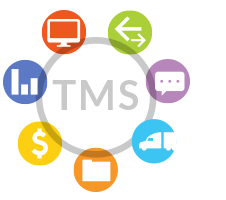REDWOOD LOGIN
Redwood PortalLTL
SCS
SCS Support
Rockfarm
Transportation management systems (TMS) have changed drastically since their initial launch in the 1980s, but still most companies haven’t updated their systems in two—or four—decades. These transportation management systems were designed before the expanse of the internet and the complexities of the supply chain could have even been imagined.
Your TMS might not currently be hurting your business, so updating the system might not seem like a priority. But if your TMS isn’t visibly optimizing routes, cutting costs, and improving supply chain processes—you’re wasting resources, time, and profits.
TMS can be one of the simplest ways to boost the bottom line, enhance vendor partnerships, and improve the customer experience.
Is it time for you to update and replace your TMS for better transport optimization?
 Transportation management systems (TMS) plan and optimize transport processes, like routing, gas expense, dispatching, and delivery itineraries.
Transportation management systems (TMS) plan and optimize transport processes, like routing, gas expense, dispatching, and delivery itineraries.
TMS is one of the best investments a transportation company or 3PL can make. It’s proven to boost savings and efficiency through streamlined technology and communication processes. It’s the simplest way to cut costs and save time, especially during the trucking crisis.
It’s not uncommon for today’s supply chain to still be run by a TMS that’s two decades old. Two decades ago, we didn’t even have iPhones. Imagine how drastically the TMS has changed since implementation in most transport companies.
Transportation management systems today can do 20x more than they used to. You know it’s time to make a change if your TMS isn’t boosting business in the following ways -
Usability is important in the transportation industry, especially when working with a complex network of supply chain partners. Today’s transportation management systems offer customizable self-configuration options.
You can easily design your own portals to offer strong accessibility to your team. You can even set up workflows and personalized screens that are branded and customized for your specific business’s needs.
Your TMS should match your business’s needs from A to Z.
The purpose of a TMS is to bring together all of the supply chain connections into one management system. Too often, companies use old TMS platforms and have to purchase separate modules or third-party tools as a means of accessing the new and necessary technology. They spend double the money on add-ons rather than purchasing a new base system.
Today’s TMS systems make it easier to integrate between systems and set up stronger supply chain partnerships. This streamlined integration improves communication between vendors and connections in a similar fashion as blockchain technology. In turn, this allows for a more controlled delivery schedule and timeline.
Transportation management systems are only as powerful as the connections using the systems. You want to try to get all of your customers and clients working on the same platform to improve processes and integrate on a more comprehensive level.
How quickly can your TMS respond to changes in planning and routing?
Today’s TMS can update routes in real-time, taking into account real-word constraints. The system can recognize and plan for everything from traffic and detours to warehouse and truck incapacities. Modern transportation management systems offer a streamlined delivery execution to ensure fast delivery, high service, and low costs.
Most transportation management systems offer a new feature that actually plans shipments at a predetermined consolidation facility. This helps to maximize on freight savings and warehousing costs, while also adhering to strict pickup and delivery constraints.
The best TMS might even one day eliminate the need for distribution centers altogether.
The ability to quickly modify routing alongside changes in the supply chain or external factors is critical for customer service and improved efficiency.
You never know when you’re going to need to alter your business structure or supply chain organization. You don’t want to change your TMS or purchase new modules every time you need to update your business plan.
Your TMS should be simple and flexible so it can evolve alongside you. If not, you might find that your transport hits major roadblocks even with minor pivots or changes in your business. These roadblocks can create hefty costs, loss of employee morale, and decrease in transport efficiencies.
 If you don’t have the above four features, it’s time to update your transportation management system. You’ll also want a new TMS if your system is over 10 years old, as modern systems have improved efficiencies and ROI by nearly 200%.
If you don’t have the above four features, it’s time to update your transportation management system. You’ll also want a new TMS if your system is over 10 years old, as modern systems have improved efficiencies and ROI by nearly 200%.
If you aren’t a transport company, you’ll still need to use a TMS in some cases. Your 3PL will use these systems to improve their supply chain management. In these cases, you’ll want to ensure that you have the same or compatible TMS platform as your key vendors to ensure comprehensive integrations.
If you’re not sure about your transport management and related technology, talk to LTX Solutions to learn more.
Compare your current TMS with the new systems on the market. What is your current TMS return on investment? You should understand where your costs are coming from in order to understand how to get ahead with your TMS.
If you aren’t saving money and evolving your transport processes, it’s time for a new solution.
Don’t wait until your TMS is behind the game. Be ahead of the competition to avoid hefty costs and loss of productivity.
Contact LTX Solutions now to get the best in transport technology. We use the best systems to optimize routes, reduce costs, and improve client satisfaction.
Contact us now to learn more about our top-notch service and efficiencies!